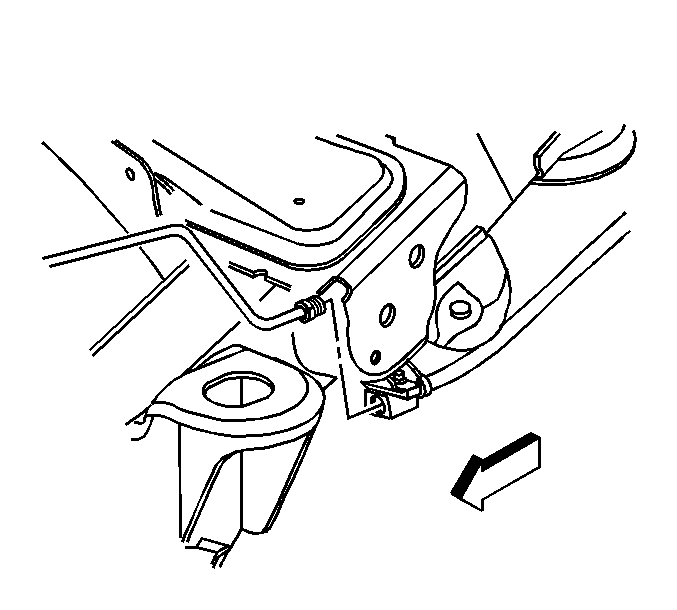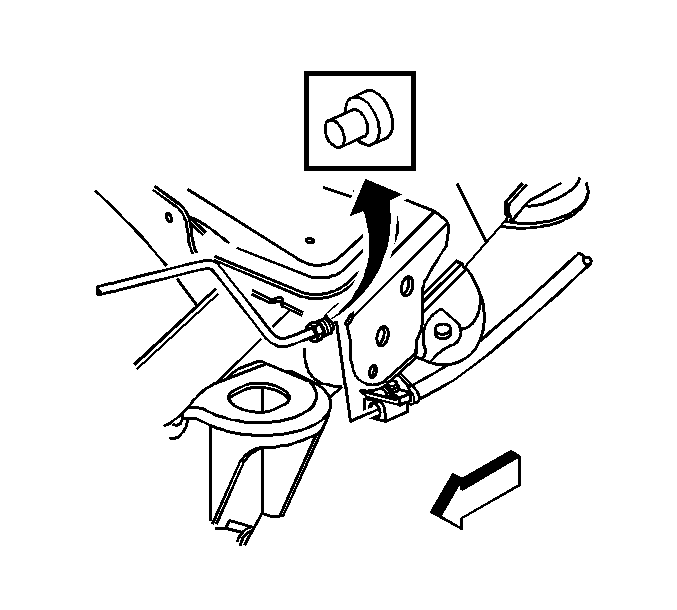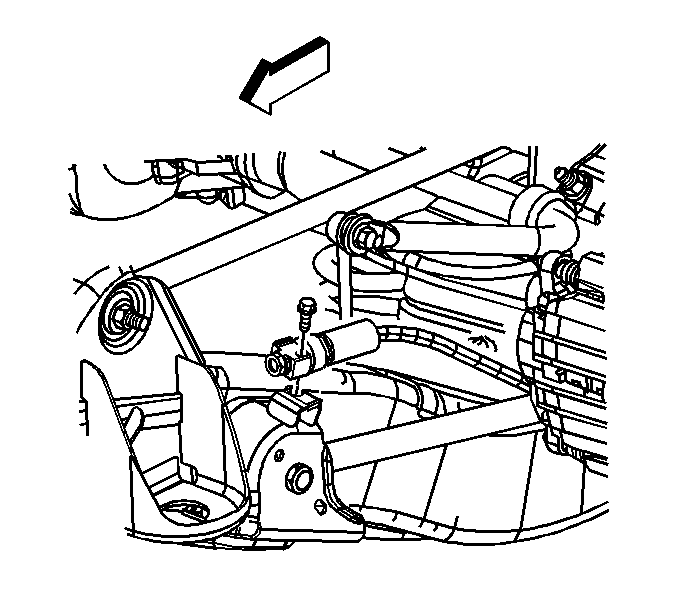For 1990-2009 cars only
Warning: Refer to Brake Fluid Irritant Warning in the Preface section.
Caution: Refer to Brake Fluid Effects on Paint and Electrical Components Caution in the Preface section.
Removal Procedure
- Raise and support the vehicle. Refer to Lifting and Jacking the Vehicle.
- Remove the tire and wheel assembly. Refer to Tire and Wheel Removal and Installation.
- Clean the all dirt and foreign material from the brake hose and brake pipe fittings.
- Using a backup wrench, remove the rear brake hose from the brake pipe.
- Install the rubber plug and/or cap on the rear brake pipe fitting.
- Remove the brake line bolt at the frame.
- Remove the brake hose bolt from the brake caliper.
- Remove the copper gaskets from the brake hose end.
- Discard the copper gaskets.
- Remove and discard the copper gaskets.


Note: Installing a rubber plug and/or cap fitting to the exposed brake pipe fitting ends will prevent brake fluid loss and contamination.


Note: The metal gaskets may be stuck to either the brake caliper or the brake hose end. Ensure that these gaskets are removed from the brake hose end and the brake caliper.
Installation Procedure
- Assemble new copper gaskets to the brake hose fitting and fitting bolt.
- Install the rear brake hose assembly to the rear brake caliper. Tighten the fitting bolt to 54 N·m (40 lb ft).
- Remove the rubber plug and/or cap from the rear brake pipe fitting.
- Install the brake pipe to the brake hose.
- Using a backup wrench, install the rear brake pipe fitting to the brake hose and tighten to 25 N·m (18 lb ft).
- Install the brake pipe retaining bolt at the frame and tighten to 20 N·m (15 lb ft).
- Bleed the hydraulic brake system. Refer to Hydraulic Brake System Bleeding.
- Install the tire and wheel assembly. Refer to Tire and Wheel Removal and Installation.
- Lower the vehicle. Refer to Lifting and Jacking the Vehicle.

Note: DO NOT reuse the old copper gaskets. Use only NEW copper gaskets.
Caution: Refer to Fastener Caution in the Preface section.



